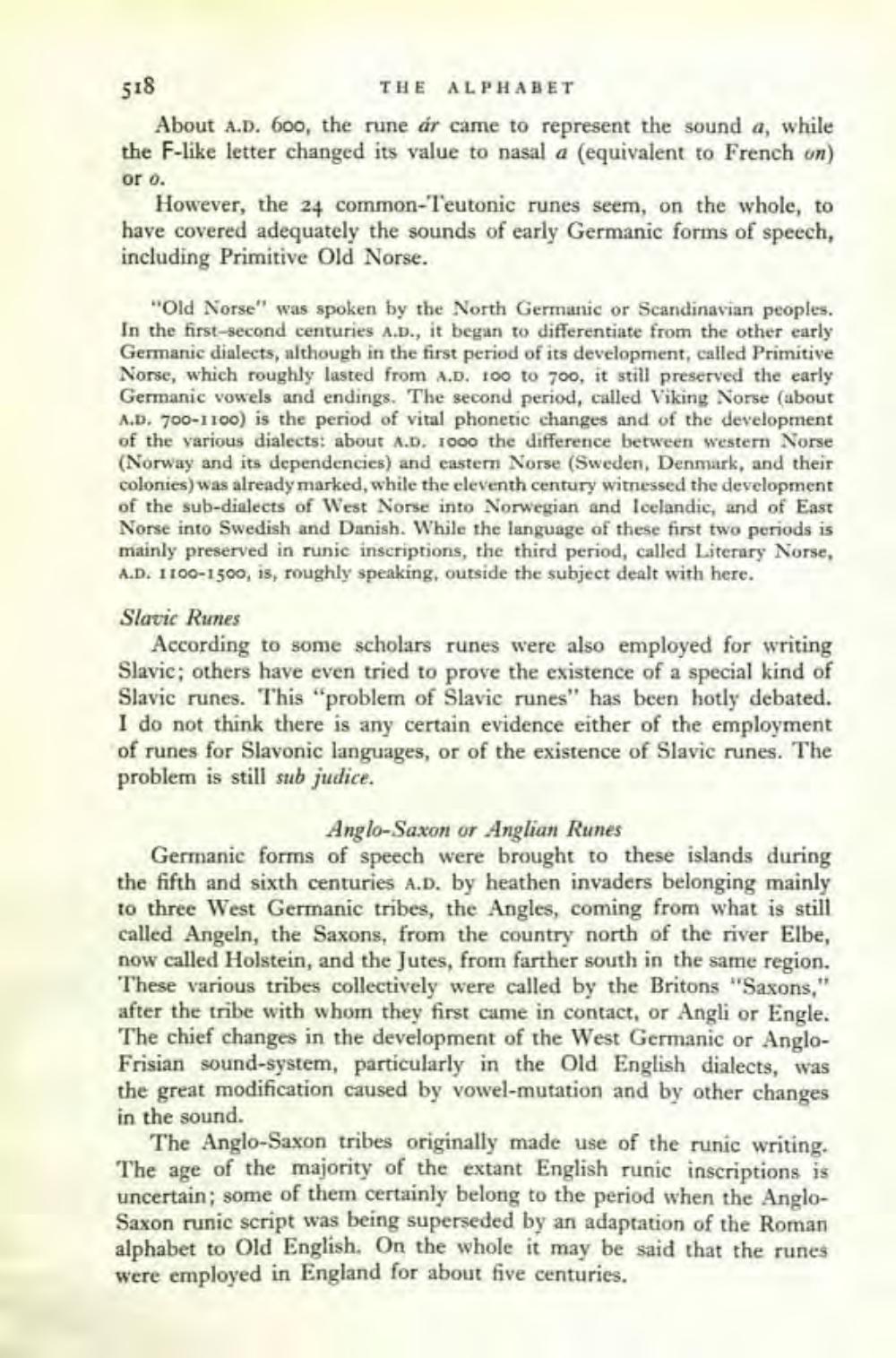________________
518
THE ALPHABET About A.D. 600, the rune ár came to represent the sound a, while the F-like letter changed its value to nasal a (equivalent to French un) or o.
However, the 24 common-Teutonic runes seem, on the whole, to have covered adequately the sounds of early Germanic forms of speech, including Primitive Old Norse.
"Old Norse" was spoken by the North Germanic or Scandinavian peoples. In the first second centuries A.D., it began to differentiate from the other early Germanic dialects, although in the first period of its development, called Primitive Norse, which roughly lasted from A.D. 100 to 700, it still preserved the early Germanic vowels and endings. The second period, called Viking Norse (about A.D. 700-1100) is the period of vital phonetic changes and of the development of the various dialects: about A.D. 1ooo the difference between western Norse (Norway and its dependencies) and castern Norse (Sweden, Denmark, and their colonies) was already marked, while the eleventh century witnessed the development of the sub-dialects of West Norse into Norwegian and Icelandic, and of East Norse into Swedish and Danish. While the language of these first two periods is mainly preserved in runic inscriptions, the third period, called Literary Norse, A.D. 1100-1500, is, roughly speaking, outside the subject dealt with here.
Slavic Runes
According to some scholars runes were also employed for writing Slavic; others have even tried to prove the existence of a special kind of Slavic runes. This "problem of Slavic runes" has been hotly debated. I do not think there is any certain evidence either of the employment of runes for Slavonic languages, or of the existence of Slavic runes. The problem is still sub judice.
Anglo-Saxon or Anglian Runes Germanic forms of speech were brought to these islands during the fifth and sixth centuries A.D. by heathen invaders belonging mainly to three West Germanic tribes, the Angles, coming from what is still called Angeln, the Saxons, from the country north of the river Elbe, now called Holstein, and the Jutes, from farther south in the same region. These various tribes collectively were called by the Britons "Saxons," after the tribe with whom they first came in contact, or Angli or Engle. The chief changes in the development of the West Germanic or AngloFrisian sound-system, particularly in the Old English dialects, was the great modification caused by vowel-mutation and by other changes in the sound.
The Anglo-Saxon tribes originally made use of the runic writing. The age of the majority of the extant English runic inscriptions is uncertain; some of them certainly belong to the period when the AngloSaxon runic script was being superseded by an adaptation of the Roman alphabet to Old English. On the whole it may be said that the runes were employed in England for about five centuries.




